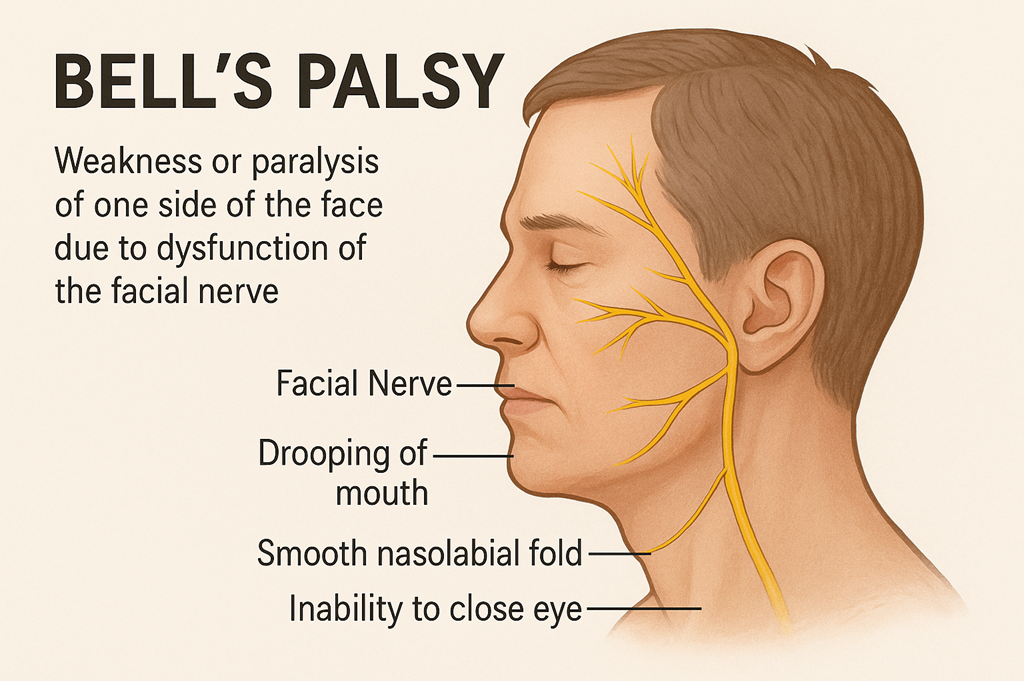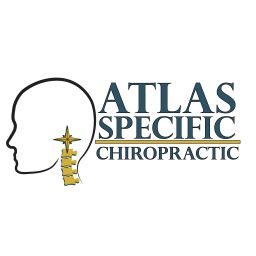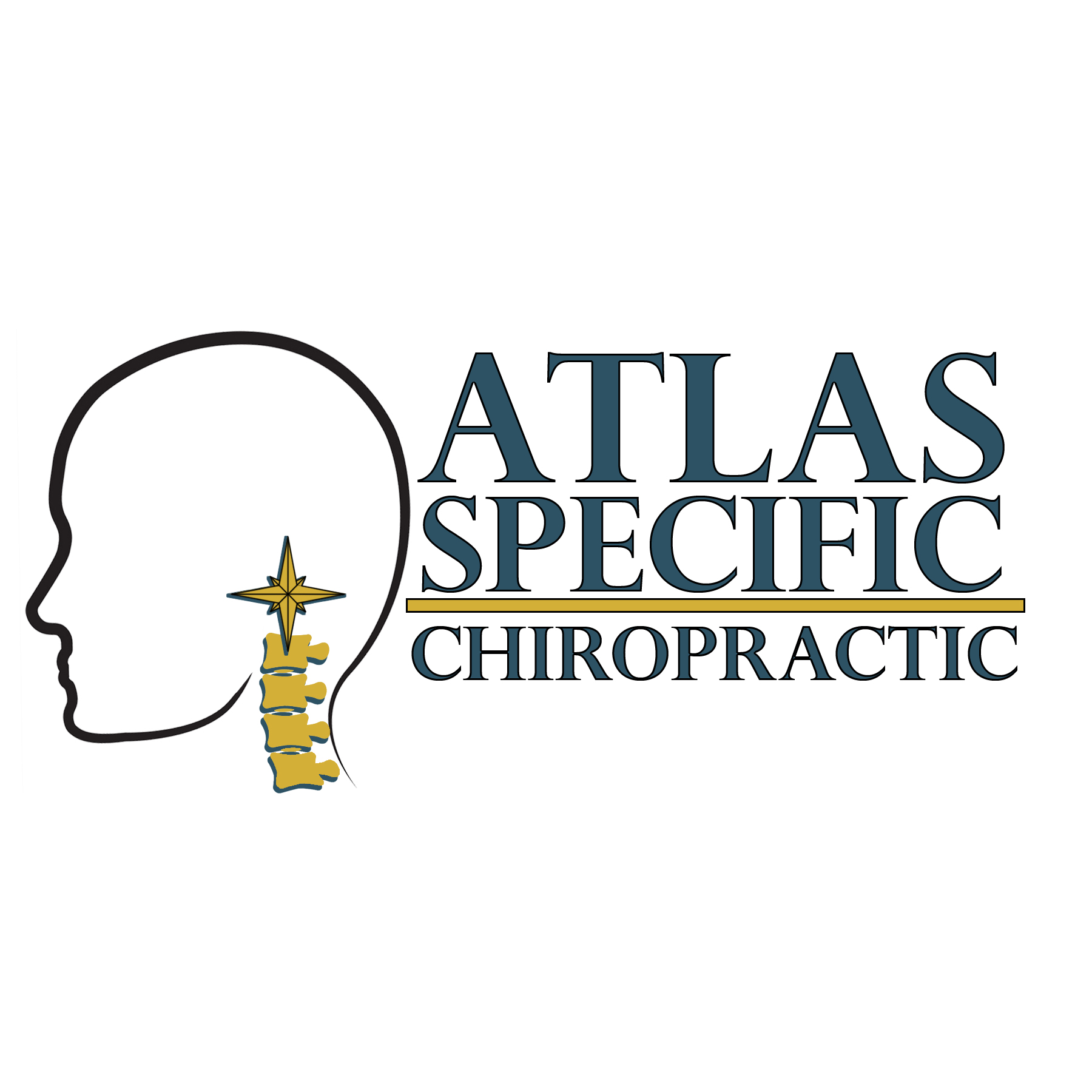
Bell's Palsy
Natural Support for Facial Nerve Recovery Through Upper Cervical Chiropractic Care
Understanding Bell’s Palsy
Bell’s Palsy is a neurological condition that causes sudden weakness or paralysis on one side of the face.
It occurs when the facial nerve (cranial nerve VII) becomes inflamed or compressed, leading to changes in facial movement, expression, and sensation.
People with Bell’s Palsy often experience:
-Facial drooping
-Difficulty smiling or closing one eye
-Sudden facial weakness
-Tearing or dryness in the eye
-Drooling or difficulty eating
-Altered taste
-Sound sensitivity on one side
-Facial pain or pressure
-Headache or ear discomfort
Bell’s Palsy can be frightening because symptoms appear quickly and dramatically — often overnight.
The good news: most people recover, especially when the nervous system is supported properly.
What Causes Bell’s Palsy?
The most common underlying factor is inflammation or irritation of the facial nerve as it travels through narrow passages in the skull.
Contributors to Bell’s Palsy may include:
Viral infections
Stress or immune imbalances
Cold exposure
Inflammation of the facial nerve
Swelling around the ear
Neck tension or injury
Upper cervical misalignment
Postural stress or TMJ dysfunction
But one of the most overlooked contributors is the function of the upper cervical spine, specifically the atlas (C1) and axis (C2).
The Upper Cervical Connection to Bell’s Palsy
The facial nerve originates in the brainstem, an area housed and protected by the upper cervical spine.
If the atlas or axis becomes misaligned, it may:
-Increase irritation around the brainstem
-Change blood flow to the facial nerve pathway
-Create inflammation in tissues surrounding the nerve
-Alter muscular tension around the jaw and ear
-Contribute to trigeminal or facial nerve sensitivity
-Affect fluid drainage around the ear (often connected to onset)
This is why many Bell’s Palsy patients report:
-Recent neck pain
-TMJ dysfunction
-Ear fullness or sinus pressure
-A recent cold, immune stressor, or high-stress period
-History of whiplash or concussion
-Tightness around the upper neck and jaw
While Bell’s Palsy affects the facial nerve, the root regulation of that nerve begins in the brainstem, heavily influenced by upper cervical alignment.
Why Bell’s Palsy Symptoms May Persist
Although many cases improve within weeks, others linger for months or return later in life.
This can happen due to:
-Persistent nerve irritation
-Incomplete healing of the facial nerve fibers
-Ongoing inflammation
-Hidden upper cervical imbalance
-Recurring stress or immune triggers
-TMJ or jaw muscle tension
-Poor circulation or drainage around the ear and face
Supporting the neurological pathway, the immune system, and proper alignment gives the facial nerve its best opportunity to heal fully.
How Upper Cervical Chiropractic Helps Bell’s Palsy
At Atlas Specific Chiropractic, we focus on restoring optimal function to the brainstem and cranial nerves through precise upper cervical care.
Here’s how our approach supports Bell’s Palsy recovery:
✔ Restoring Proper Brainstem Communication
The facial nerve emerges from the brainstem. Correcting upper cervical misalignment reduces tension, irritation, and interference around this critical area.
✔ Improving Blood Flow & Nerve Healing
Proper atlas alignment enhances circulation to cranial nerve pathways, which helps nerve fibers recover.
✔ Reducing Muscle Tension Around the Jaw and Neck
Tight muscles (masseter, SCM, digastric, upper neck muscles) often increase irritation to facial nerve structures.
✔ Supporting Immune & Inflammatory Regulation
The brainstem influences autonomic balance — which affects healing speed, inflammation, and facial nerve recovery.
✔ Gentle, Specific Adjustments (AHKC Technique)
No twisting.
No cracking.
No forceful rotation.
Just precise correction measured down to 1/100th of a degree and millimeter.
Many patients report improvements such as:
-Better facial control
-Reduced ear and jaw tension
-More natural facial expressions
-Improved eye closing and blinking
-Better coordination of facial muscles
-Faster return of normal function
Is Your Bell’s Palsy Connected to Your Neck?
You may be a strong candidate for upper cervical evaluation if you notice:
-Facial weakness with neck stiffness
-TMJ problems or jaw clicking
-Ear symptoms before onset
-A recent cold, infection, or stress flare
-Headaches or migraines
-A history of concussion or whiplash
-Symptoms that fluctuate with posture
-Facial pain or trigeminal irritation
These are signs that your facial nerve irritation may have a structural component.
A Gentle Approach That Supports Your Body’s Healing
Bell’s Palsy can feel frightening and unpredictable, especially when facial movements suddenly change.
But the body has a strong capacity to heal — and restoring proper brainstem and cranial nerve function often accelerates recovery.
At Atlas Specific Chiropractic in Hiawatha, IA, we help patients across the Cedar Rapids area recover naturally by correcting upper cervical alignment and supporting the facial nerve’s healing environment.
📞 Call (319) 343-8540 or schedule your first visit today to begin your recovery.
Open Hours
Monday, Tuesday, Thursday
9:00 - 6:00
Wednesday
12:00 - 6:00
friday
9.00 - 2.00
© Atlas Specific Chiropractic | Powered by Webflow.




